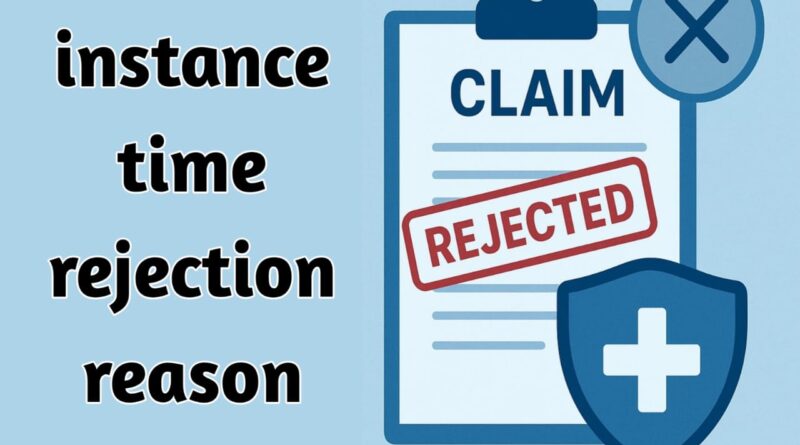Health Insurance Claim Rejection Reasons (And How to Avoid Them)
Introduction: You Deserve Better
Have you ever faced the heart-sinking moment when your hospital bills arrive, only to learn your health insurance claim has been rejected? You did everything the doctor asked, paid your premiums faithfully, and still… the insurer says “no.” It’s frustrating, emotional, and often comes at the worst possible time.
I still remember a friend’s ordeal: after a surgery, she gathered the bills, submitted them carefully — only to receive a terse rejection letter citing a “technical error.” She had to scramble through mountains of paperwork, talk to hospital billing staff, and file appeals just to get partial relief.
That experience taught me something: claim approval is not automatic. It can be derailed by small mistakes, missing paperwork, or misunderstood policy rules. In this updated 2024 guide, I’ll walk you through the most common health insurance claim rejection reasons, how to avoid them, and what to do if your claim is denied. I’ll even share a special link for Hostinger if you decide to start a health-oriented blog later (yes, blogging and insurance often cross paths!).
Let’s dive in.
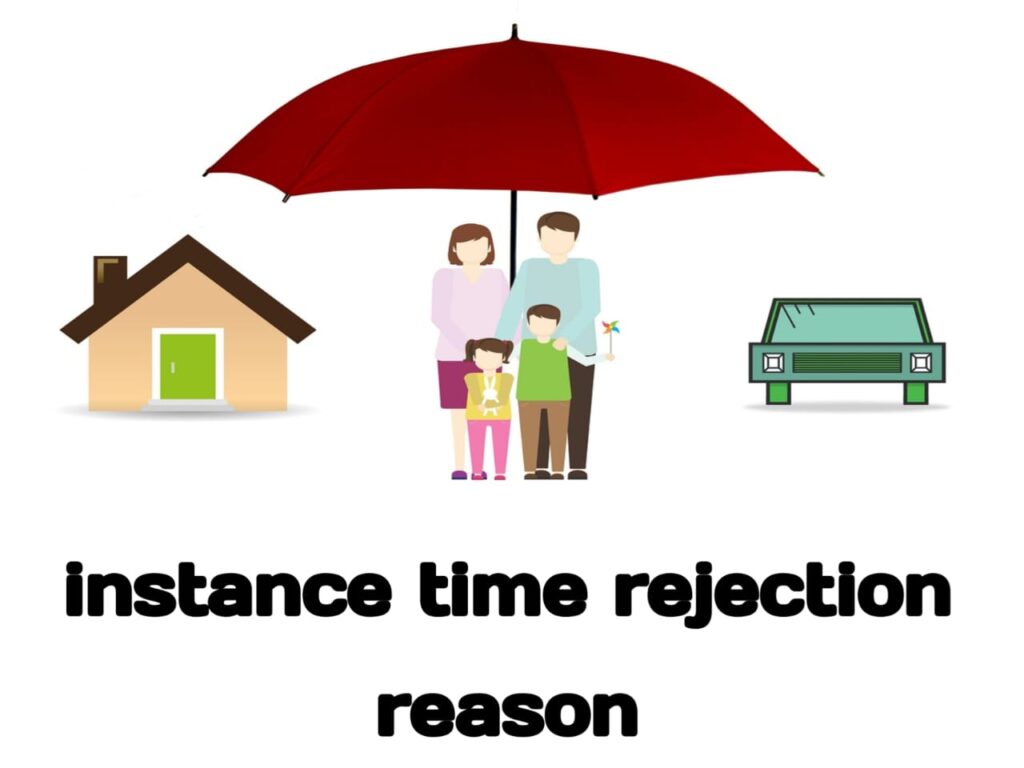
Table of Contents
- Understanding Rejection vs Denial vs Repudiation
- Top Health Insurance Claim Rejection Reasons
- Incorrect / Missing Information
- Policy Lapse or Expired Coverage
- Failure to Meet Waiting Periods / Pre-existing Conditions
- No Pre-authorization or Referral
- Outside Network / Out-of-Plan Provider
- Service Not Covered / Policy Exclusions
- Duplicate Claim / Timely Filing Breach
- Coding & Billing Errors
- Insufficient Documentation
- Suspicion of Fraud / Misrepresentation
- How to Avoid Claim Rejections: Step-by-Step Checklist
- If a Claim Is Rejected: What You Should Do
- Key Takeaways
- FAQ
- Conclusion
1. Understanding Rejection vs Denial vs Repudiation
Before we dig into reasons, it helps to clarify some insurance vocabulary:
- Claim Rejection: The insurer refuses to even process your claim, often because of technical or form errors. The claim is returned for correction or resubmission. (Oneassure)
- Claim Denial: The insurer processes the claim but rejects payment based on policy terms, coverage limits, or internal criteria (e.g. medical necessity) (Verywell Health).
- Claim Repudiation: A more severe refusal, often meaning the insurer contends that the claim is void due to fraud, misrepresentation, or breach of policy terms. (Oneassure)
In practice, if your claim is rejected, you often have the chance to fix errors and resubmit. If it’s denied/repudiated, you may need to appeal or escalate. Understanding which it is matters.
2. Top Health Insurance Claim Rejection Reasons
Below are the most frequent reasons insurers reject claims, along with real-world examples and data:
2.1 Incorrect / Missing Information
One of the simplest yet most common causes. If your personal details (name, date of birth, policy number) are wrong, or if the insurer/hospital name is mismatched, your claim might not even enter the system. (Maryland.gov Enterprise Agency Template)
Also missing or incomplete fields (diagnosis codes, treatment codes, provider signature) lead to rejections. (HealthySteps)
2.2 Policy Lapse or Expired Coverage
If your health insurance premium is unpaid or the policy has expired before the treatment date, the insurer may reject your claim automatically. (Even)
Similarly, if the policy was canceled mid-term, any claim after cancellation is void.
2.3 Failure to Meet Waiting Periods / Pre-existing Conditions
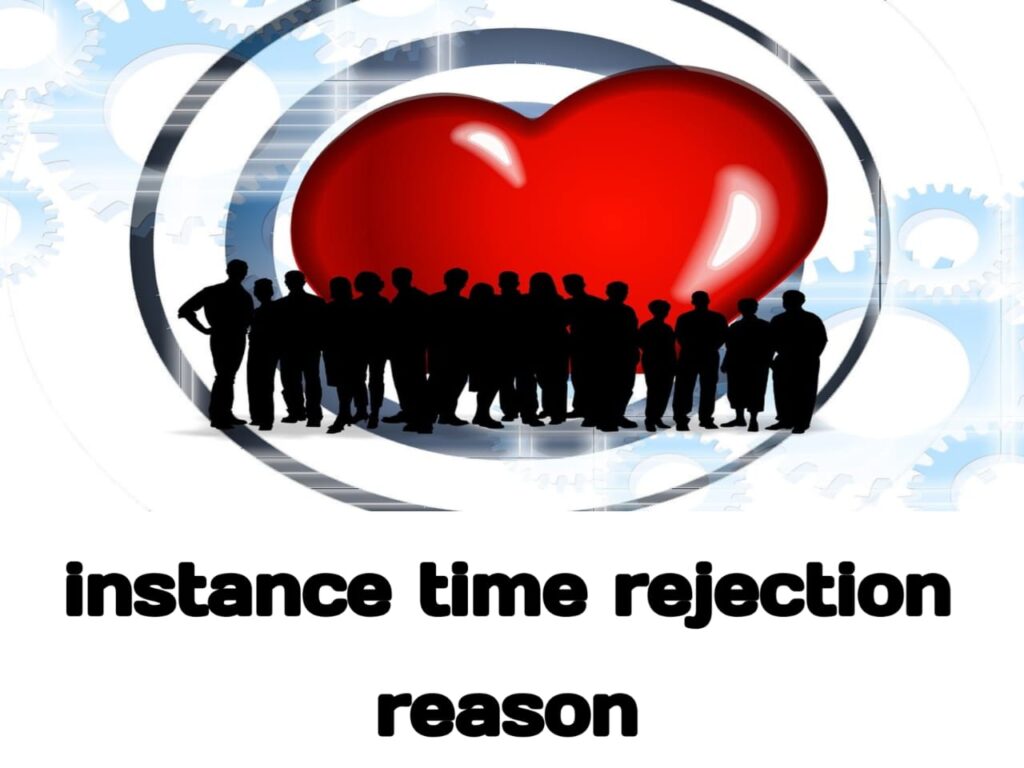
Many health plans include a waiting period (1–3 years or more) for coverage of pre-existing diseases. If you file a claim for a condition before that period ends, rejection is likely. (Policybazaar)
Non-disclosure of pre-existing diseases is another frequent reason. If you didn’t mention a prior condition that later leads to a claim, the insurer may say you misrepresented facts. (Policybazaar)
2.4 No Pre-authorization or Referral
Some procedures, tests, or treatments must be pre-approved by the insurer (pre-authorization). If you skip that step, even if medically necessary, your claim may be rejected. (enablecomp.com)
Also, if your plan requires a physician referral (especially for specialists) and you bypass it, that’s grounds for rejection. (enablecomp.com)
2.5 Outside Network / Out-of-Plan Provider
If you used a non-network hospital or doctor (outside your insurer’s panel), your claim could be rejected or severely limited. (Verywell Health)
Sometimes an “in-network” label is wrong or outdated, so confirm before treatment.
2.6 Service Not Covered / Policy Exclusions
Health policies list what isn’t covered — elective or cosmetic surgery, experimental treatments, alternative therapies, certain diagnostics, etc. If the service is excluded, the insurer rejects. (enablecomp.com)
Even when the service is covered, limits or caps (e.g. number of sessions, annual ceilings) might apply.
2.7 Duplicate Claim / Timely Filing Breach
Submitting the same claim twice or after the insurer’s deadline can cause rejection. (enablecomp.com)
Many insurers have strict timelines (e.g. 30 days, 90 days, one year) for when a claim must be filed. (Maryland.gov Enterprise Agency Template)
2.8 Coding & Billing Errors
Medical claims rely heavily on ICD-10, CPT, or equivalent codes. If you use outdated or incorrect codes (or mismatch codes and treatments), your claim may be rejected. (Maryland.gov Enterprise Agency Template)
Billing errors (incorrect amounts, missing line items, invalid modifiers) also trigger instant rejections. (The Missing Piece)
2.9 Insufficient Documentation
If you fail to attach relevant documents — hospital reports, prescriptions, test results, diagnostic images — the claim may be rejected for lack of evidence. (Even)
Even if documents are provided, they must be clear, legible, correctly dated, and tied to the claim.
2.10 Suspicion of Fraud / Misrepresentation
If the insurer suspects incorrect or exaggerated claims, or concealment of facts, they may reject or even investigate. (Oneassure)
Misstatement of facts (e.g. hiding a pre-existing disease) is a red flag. In extreme cases, repudiation may follow. (Oneassure)
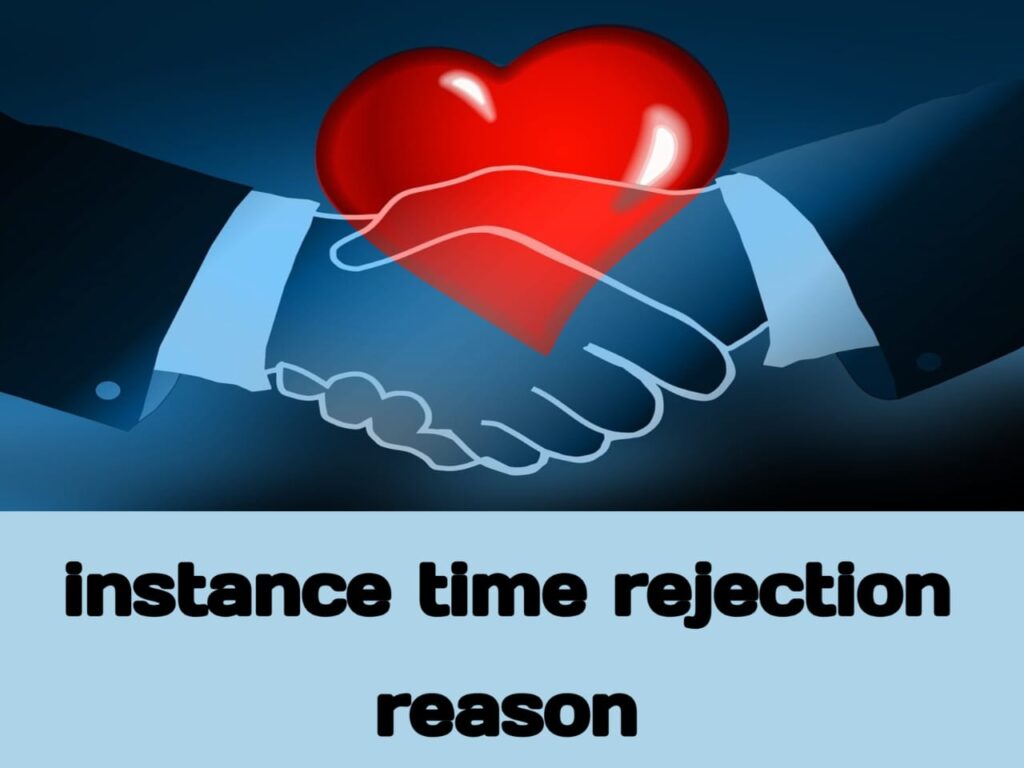
3. How to Avoid Claim Rejections: Step-by-Step Checklist
Here’s a smart, actionable checklist you (or your hospital billing staff) can follow before submitting any claim:
| Step | Action | Why It Matters |
|---|---|---|
| 1. Verify Policy Status | Confirm your policy is active, premiums paid, and there is no lapse. | Avoid rejection due to expired or lapsed policy. |
| 2. Read Policy Terms & Exclusions | Study which services are covered, waiting periods, caps, network rules. | Helps you avoid treatments that won’t be covered. |
| 3. Confirm Pre-authorization / Referral | For treatments needing approval, get this in writing before proceeding. | Prevents outright rejection for non-authorized services. |
| 4. Choose In-Network Providers | Use hospitals/doctors in your insurer’s network whenever possible. | Saves on rejection and cost. |
| 5. Gather Complete Documents | Collect prescriptions, reports, test results, bills, discharge summary, etc. | Well-documented claims are harder to reject. |
| 6. Check Coding Accuracy | Ensure correct ICD/CPT codes, procedure modifiers, dates, etc. | Prevents coding errors that trigger rejection. |
| 7. Double-check Claim Form | Review every field (name, DOB, policy number, provider details). | Small typos often cause rejections. |
| 8. Submit Before Deadline | File your claim well within the insurer’s specified timeframe. | Timely filing avoids rejection due to delay. |
| 9. Retain Copies & Track Submission | Keep duplicates, obtain acknowledgment if possible. | Helps with follow-up and appeals. |
| 10. Consult Insurer / Billing Office | Ask the insurer or hospital billing to pre-review or validate before final submission. | Worst-case issues can be flagged early. |
By systematically following the above, you reduce your risk of rejection significantly.
4. If a Claim Is Rejected: What You Should Do
If your claim gets rejected, don’t panic. Here’s a smart recovery strategy:
- Read the Rejection Notice Carefully
The insurer’s letter must provide a reason code or explanation. This helps you pinpoint the fix. - Differentiate Rejection vs Denial
If it’s rejected (technical error), you can often correct & resubmit. If denied, you may need to appeal or escalate. - Contact Insurer / Billing Office
Speak with their claims department or your hospital’s billing department. Ask exactly what’s missing or incorrect. - Rectify the Error
Provide the missing documents, correct codes, or adjustment the insurer requested. - Submit an Appeal / Grievance
If the insurer denies payment based on coverage or medical necessity, file a written appeal within the stipulated timeframe. - Escalate / External Review (if available)
Many jurisdictions require an external, independent review of denied claims. You may also involve a regulator or consumer court. - Use Evidence & Physician Support
Attach medical justification from your doctor, peer opinions, or published guidelines to support your case. - Stay Organized & Follow Up
Keep a timeline, track communications, and don’t let deadlines slip. - Learn & Prevent for Next Time
Once resolved, review what went wrong and adjust your submission processes for future claims.
Even after rejection, many claims can be salvaged — as long as you act promptly and with evidence.
5. Key Takeaways
- Small mistakes can derail big claims — even typos or missing fields can lead to rejection.
- Read your policy carefully — exclusions, waiting periods, network rules matter.
- Pre-authorization and proper referrals matter — skip them at your peril.
- Coding, documents, and deadlines are non-negotiable — they’re the backbone of claim acceptance.
- If rejected, don’t give up — you may resubmit or appeal.
6. FAQ
Q1. Can I resubmit a rejected claim?
Yes. A rejection is typically a technical error — once corrected, you can resubmit within the insurer’s timeframe. (HealthySteps)
Q2. How long after rejection can I appeal or resubmit?
Each insurer sets its own deadline — it could be 30, 60, or 90 days. Always check your policy or rejection notice.
Q3. What’s the difference between “not medically necessary” and coverage exclusion?
“Not medically necessary” means the insurer does not deem the treatment justified under clinical criteria. A coverage exclusion means the policy expressly forbids that service.
Q4. What if the insurer still refuses after appeal?
Seek an external review if available, involve a regulator or consider legal/consumer action if warranted.
Q5. Is fraud or misrepresentation always grounds for rejection?
Yes — deliberate concealment of medical history or exaggeration of claims can lead to repudiation or legal consequences.
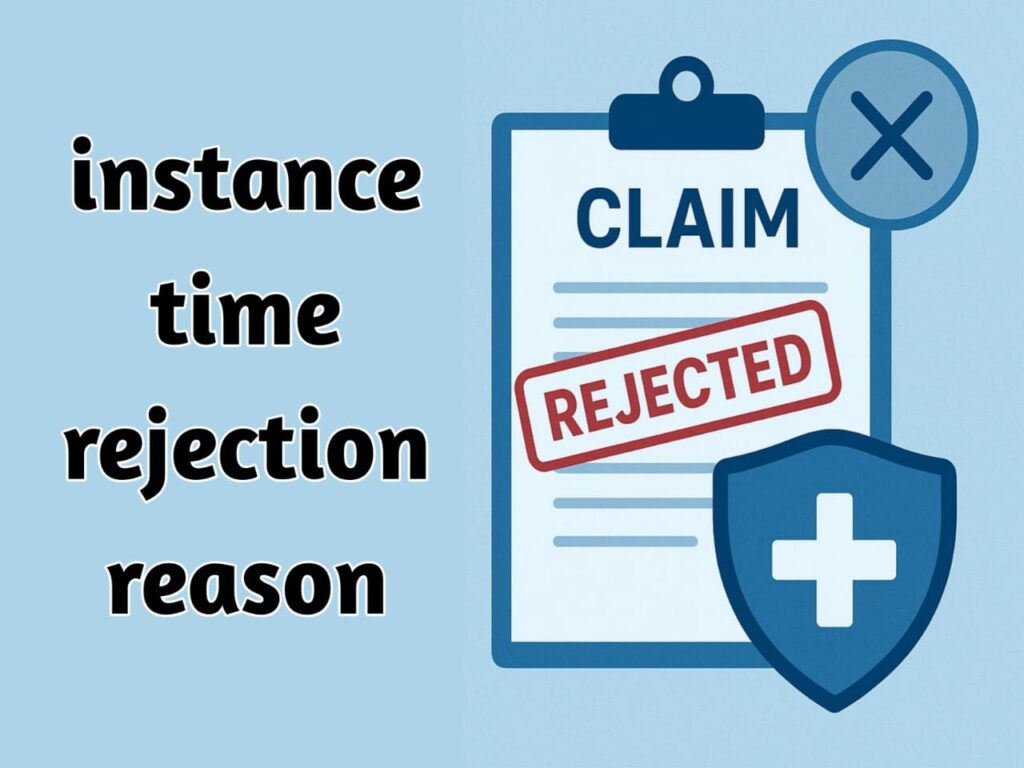
Conclusion
Health insurance claim rejections are not uncommon — but they’re rarely inevitable. Most rejections stem from errors, documentation gaps, policy ignorance, or procedural lapses. If you follow the steps above — from checking policy status and capturing complete records to coding accurately and acting swiftly when a claim is rejected — your chances of getting your claim accepted rise significantly.
You deserve access to care — and you deserve your rightful claim. Be precise, be proactive, and be persistent.

